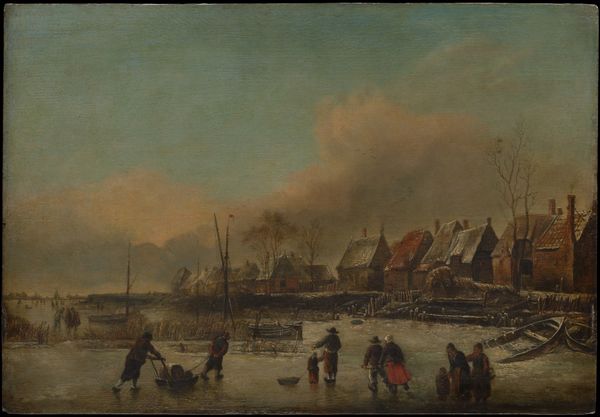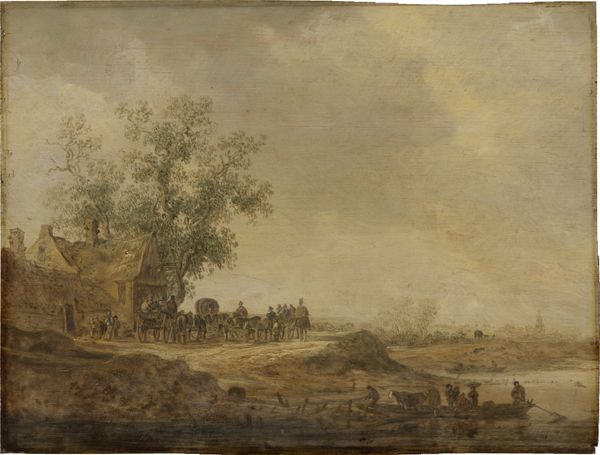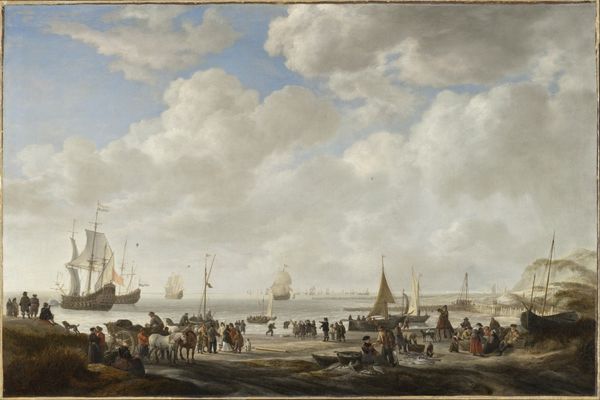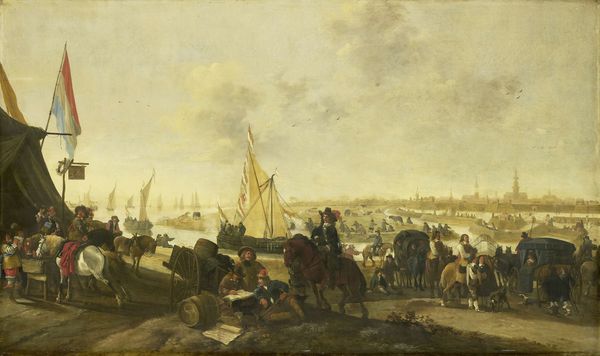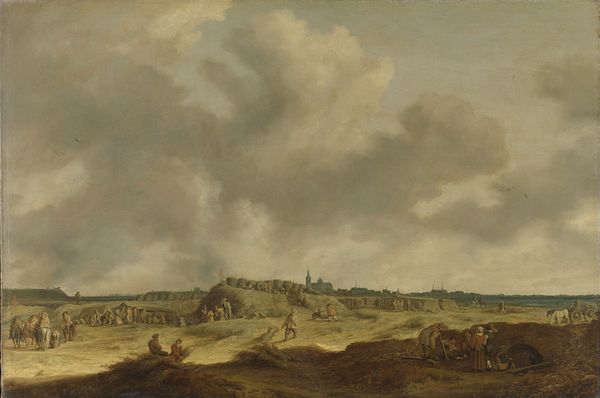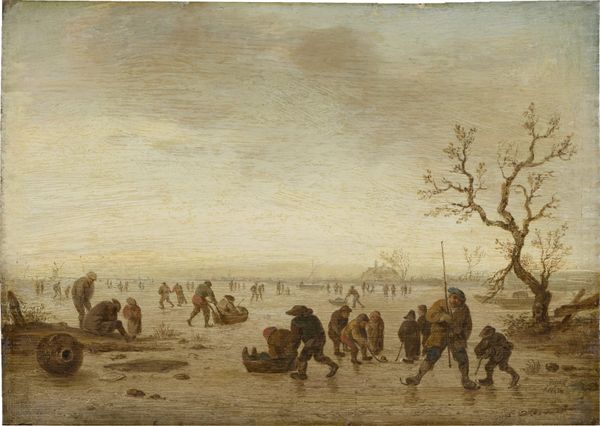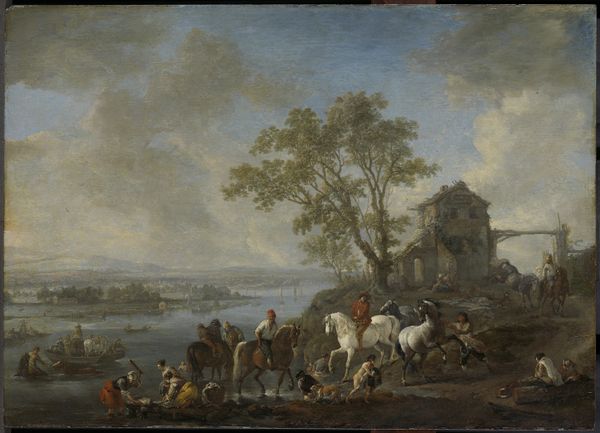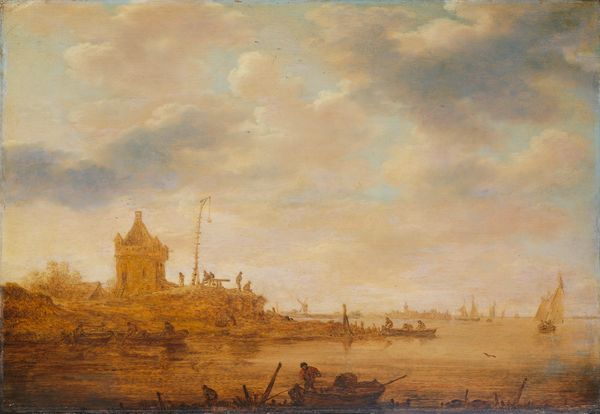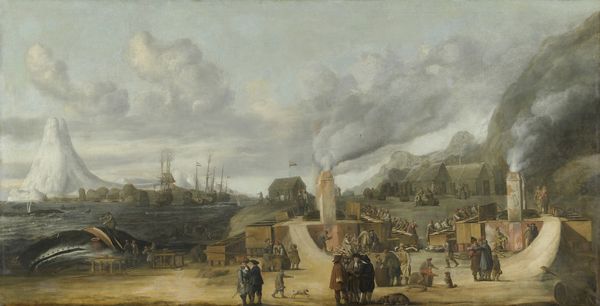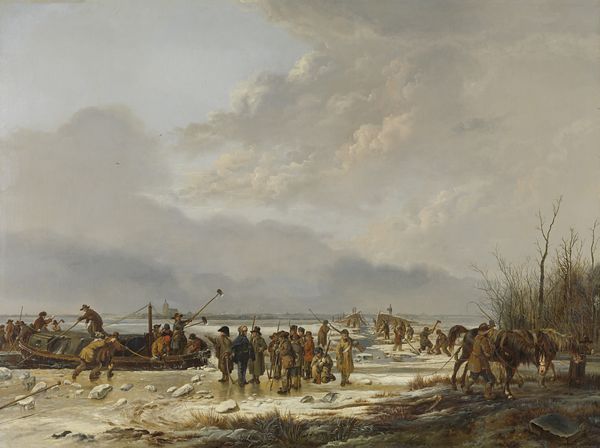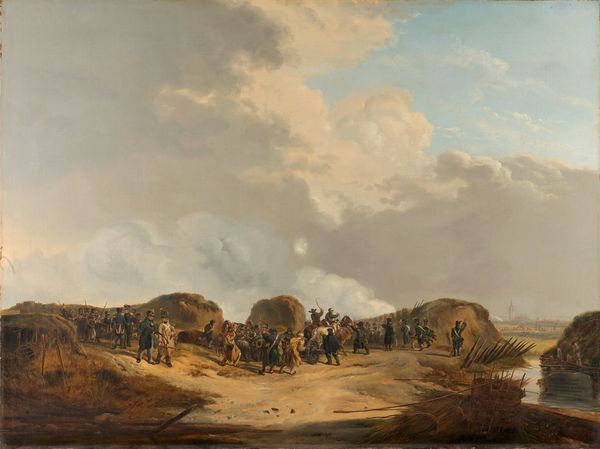
oil-paint
#
dutch-golden-age
#
oil-paint
#
landscape
#
cityscape
#
genre-painting
#
realism
Dimensions: 11 x 17 in. (27.9 x 43.2 cm)
Copyright: Public Domain
Curator: The pervasive somber tones immediately create a muted and subdued atmosphere. Editor: We're looking at Jan van Goyen's "A Beach with Fishing Boats," crafted in 1653, rendered in oil on panel. Van Goyen was a key figure in the Dutch Golden Age, capturing the local landscapes in their atmospheric splendor. You can find this at the Metropolitan Museum of Art. Curator: It seems deceptively simple at first glance, but it conveys a rather potent sense of daily life, doesn’t it? You can almost feel the grit of the sand, and the overcast sky hints at the struggles of those making a living from the sea. Editor: Absolutely, and when you look closer, the composition reveals a masterful control of tonal painting. He uses a limited palette – browns, greys, and muted yellows – to create a sense of depth and recession, drawing our eye towards the distant horizon. This reinforces how intertwined labor and the rhythms of nature are in this specific location and time. Curator: Yes, it evokes a very grounded sensibility that rejects romanticized notions. I am curious about how the figures on the beach represent a specific cross-section of 17th-century Dutch society: working people, families... Do we see an intersection of socio-economic conditions represented? Editor: Most certainly. He does emphasize realism, moving beyond idealized depictions and capturing everyday reality—including the challenging existence for some. Consider the semiotic readings here: fishing boats as symbols of both hope and risk, the dark skies reflecting uncertain futures, a reminder that social structures significantly influence access to resources and opportunities. Curator: The way the overcast sky dominates, it’s far from a picturesque vista. This is life—the labor, the community, the precariousness. Van Goyen gives the sky equal status with human endeavors; it almost serves as a constant reminder that people are subordinate to the whims of nature. Editor: Exactly. Through tonal harmony and carefully constructed composition, Van Goyen achieves more than just a scene. It is an allegory, an expression of human connection with the environment. Curator: Seeing van Goyen's understanding of a specific historical and social time, in this respect, provides an important context to appreciate this art on a deeper level. Editor: Agreed; examining Van Goyen’s landscape has further convinced me of his ingenious approach to the fundamentals of picture-making.
Comments
No comments
Be the first to comment and join the conversation on the ultimate creative platform.

